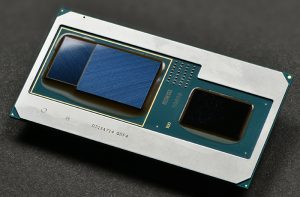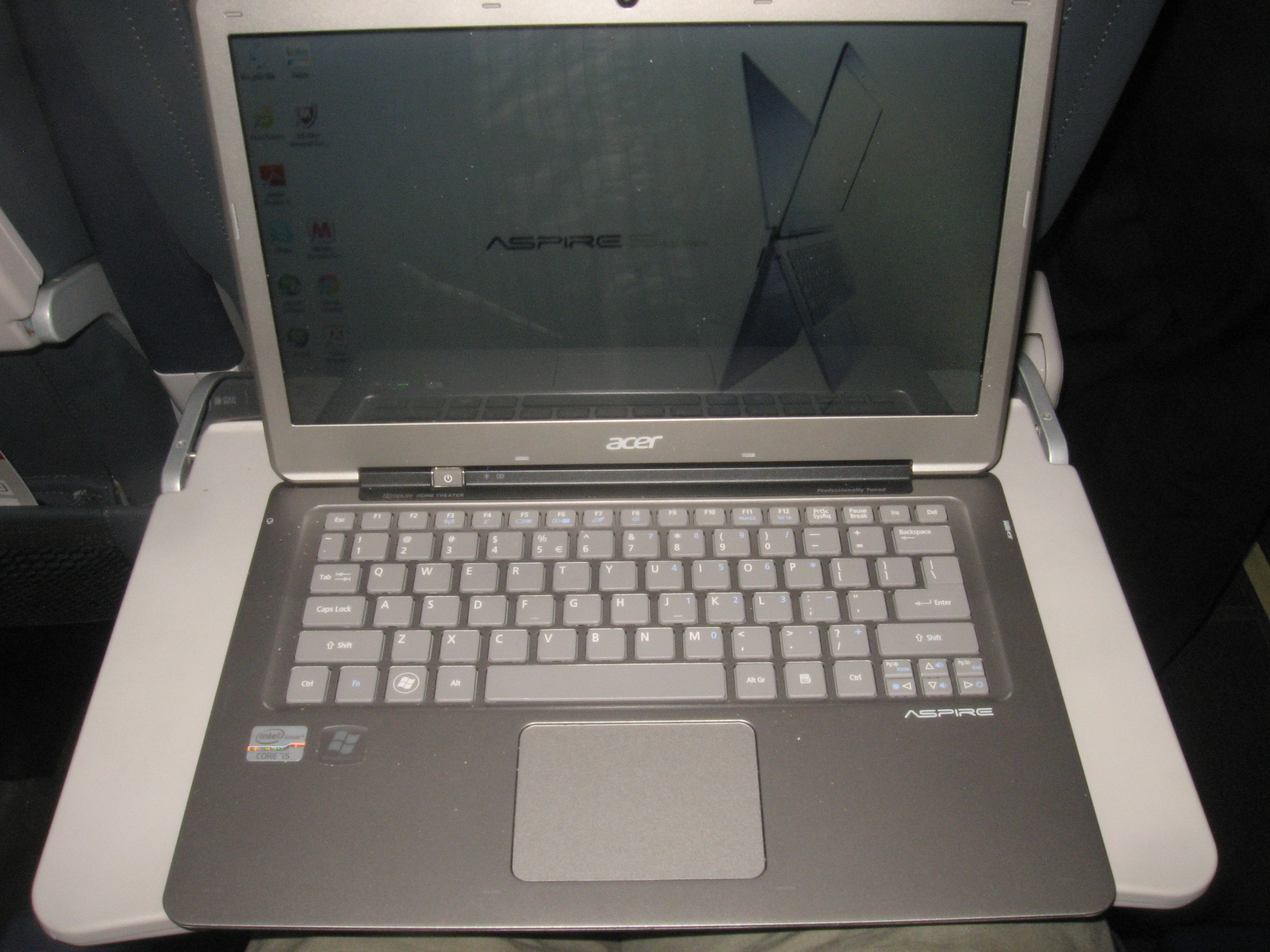Articles

Intel Corporation is introducing the 8th Gen Intel Core processor with Radeon RX Vega M Graphics in January 2018. It is packed with features and performance crafted for gamers, content creators and fans of virtual and mixed reality. (Credit: Walden Kirsch/Intel Corporation)
Intel’s Vega-Powered SoC Debuts In VR-Capable ‘Hades Canyon’ NUC | Tom’s Hardware
Intel launches Coffee Lake CPUs with onboard AMD Radeon RX Vega M GPUs | bit-tech
Intel and AMD Join Forces on Tiny New Chip | Gizmodo
Intel and AMD ally to shrink your next gaming laptop. A lot. |CNet
Intel launches five Core chips with Radeon graphics from rival AMD | PC World
From the horse’s mouth
Intel
8th Generation Intel Core with Radeon RX Vega M Graphics (Product Overview – PDF)
My Comments
Intel have used the Consumer Electronics Show 2018 to premiere a system-on-chip that is to affect how portable and small-form-factor computers will perform.
This chip, part of the 8th generation of Intel CPUs contains an 8th Generation Core i5 or i7 CPU along with an AMD Radeon RX Vega M discrete graphics processor and an Intel HD 630 integrated graphics processor.
It is positioned in the Intel 8th Generation processor lineup which is like this:
- U-Series processors that are only equipped with an Intel UHD integrated graphics processor. One of these is installed in the latest iteration of the Dell Inspiron 13 7000 which I reviewed for this site. Here this family of processors is pitched towards what most people will want for their personal and business computing needs.
- G-Series processors that are also equipped with the above-mentioned Radeon RX Vega M graphics processors. These are pitched as a performance option which would appeal to most gamers, virtual-reality / augmented-reality enthusiasts and content creators who want a machine with that bit of “pep” when it comes to graphics.
- H-Series processors which are pitched towards those who want the highest performance and would rely on a dedicated graphics processor. Here, they would apply to the gaming rigs and workstations where the goal is for full-on performance.
What is special about these Intel processors
These Intel processors place the Core CPU and the AMD GPU on the same die along with a stack of dedicated graphics RAM and they are linked using the EMIB (Embedded Multi-Die Interconnect Bridge). This arrangement provides a short link between each component to provide for quick data transfer. There is also a power-optimised design to allow for efficient power use by all the components on the chip.
There are two variants of the graphics subsystem available for the chipset known as the GL and the GH. The GL (Graphics Low) variant is optimised with less than 65 watts power draw and is pitched towards “thin-and-light” laptops and the like. The GH (Graphics High) variant is a higher-performance variant that draws less than 100 watts of power and only comes with the Core i7 CPU. Here, it is pitched towards the small-form-factor desktops, all-in-ones and similar computers that normally work from a constant power supply.
All that horsepower in those dies can allow the computer to paint an image across nine display devices at once. The fact that there is an integrated graphics processor on board can allow these “system-on-chip” setups to engage in “performance / economy” switching to maximise power efficiency.
Where are they being premiered in?
The first two variants are the Core i7-8809G CPU with Radeon RX Vega M GH for performance and the Core i7-8705G CPU with Radeon RX Vega M GL as the value option.
These are being released to go with the the Hades Canyon series of “Next Unit Of Computing” small-form-factor computers. Both of these computers are available as a kit which can support 32Gb (2 x 16Gb) DDR4 RAM and 2 M2-compliant solid-state drives. These have plenty of USB connections including 2 Thunderbolt-3 sockets and can connect to your home network via one of two Gigabit Ethernet sockets or 802.11ac Wi-Fi.
What kind of impact do I see these Intel chips have on computer design?
One class of computer that will definitely benefit will be the portable computers that most of us will consider purchasing. The computing press see a benefit when it comes to “enthusiast-class” laptops where they will benefit from a slimmer chassis along with the ability to run in a quiet and cool manner yet deliver the performance they are known for. It will also lead to longer battery runtimes like nine hours even while engaging in high-performance work.
But I see computer manufacturers deploying these CPU/GPU chipsets as the standard expectation for the mainstream 13”-15” home or business laptops that are their “bread and butter” products. Typically these machines have a larger chassis than the ultraportables and are valued by most users for factors like durability, connectivity and ability to choose different configuration options. Here, the manufacturers can design in larger battery packs or extra peripherals like multiple storage devices or optical drives or even improve how these computers sound by using larger speakers.
Let’s not forget that the computer manufacturers could also offer in their ultraportable lineup a run of computer products that are thin and light yet powerful.
As far as sessile computers are concerned, I would see that ultra-small “next unit of computing” units benefit along with the all-in-ones that have the computing electronics part of the screen. Other traditional desktop computers that could also benefit include those that are the same size and shape as typical consumer-electronics devices.
Conclusion
I would see Intel’s 8th-generation “Coffee Lake” G-series CPU/GPU hybrid chip being something that offers greater potential for how the personal computer is designed without losing the desire for more computing power.



